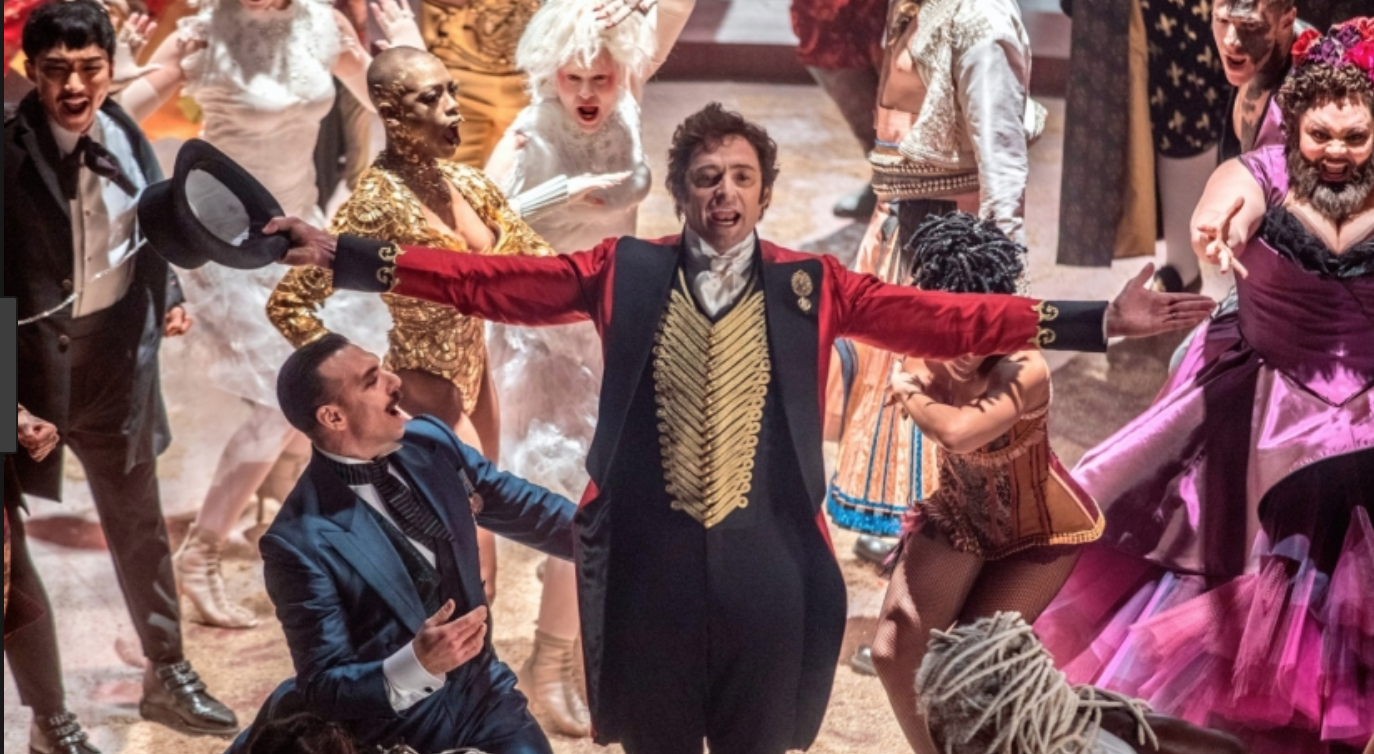There are two ways to look at P.T. Barnum: a man promoting diversity during a time when it was unheard of to do so or a ruthless businessman capitalizing on building his empire atop the backs of “freaks.” Hollywood chooses the former–and in musical form, to add to the extremely overt sanitization of the tale. That being said, for the most part, The Greatest Showman suffers from the same syndrome as Barnum himself: being a crowd pleaser (at least on the philistine level, which is what the circus attracted most of all at its outset) despised by high-brow critics.
In director Michael Gracey’s defense, The Greatest Showman marks his feature debut, therefore making him even more of an instrument for the voices of co-screenwriters Jenny Bicks, a Sex and the City writing veteran, and Bill Condon, best known for spinning musical adaptation gold to the tune of Chicago, Dreamgirls and, most recently, Beauty and the Beast. Extrapolating the very best version of Barnum’s life and philosophy as they could for the understandable purpose of trying to drum up some Christmas box office revenue (which didn’t end up working), it’s no elephantine feat to quickly detect the fool’s gold storyline about the ringmaster gathering a group of freaks as a means to spread his so-called message of “celebrating humanity.” Though, in the purest American capitalist sense of the phrase, he celebrated humanity by profiting as much as he could off of it–and its susceptibility to being scammed under the guise of experiencing “magic” and escapism.
This isn’t the portrait that a studio like 20th Century Fox would feel comfortable exploring too heavily, lest it off-put the type of audience this film draws. Though there’s no denying a wealth of scenes rife with entertainment value, most of the dynamics between the primary characters are as phony as the very “creatures” Barnum embellished in his day to make them appear as even greater “curiosities.” For instance, we’re expected to believe that one look between Barnum’s wealthy playwright-turned-business partner, Phillip Carlyle (Zac Efron), and black trapeze artist Anne Wheeler (Zendaya) is enough to make him risk emotional and financial disownment from his parents. Mere looks as promises of sacrifices to be made are a running motif throughout the film, in fact, with Barnum’s encounter with opera singing talent Jenny Lind (Rebecca Ferguson) leading her to believe there could be more between them than he’s willing to allow. And while, yes, a certain part of Barnum loves Lind–that is, the part of her that he can extract money out of by bringing her to America for a tour thereby receiving legitimization from the upper crust–Barnum’s truest love, as his wife, Charity (a bland and forgettable Michelle Williams), throws in his face as their house is about to be foreclosed on, is his show. Yet, among many other “feel good” messages that the writers relish squeezing in–apart from the American dream still being achievable (turning from a “nobody” poor person into someone rich) and the one about self-acceptance sung as “This Is Me” by bearded lady Lettie Lutz (Keala Seattle)–is the one that ultimately makes Barnum put his family above the self.
A cursory glimpse at the facts of his life, however, declare otherwise. And, speaking of facts, noticeably missing from the narrative is Hachaliah Bailey, whose name makes up the latter part of the Barnum & Bailey circus, later acquired by Ringling Bros. (which closed at the beginning of 2017 after much controversy for its treatment of animals, particularly the elephants). Though Barnum worked selling tickets for Bailey’s as a boy, no mention of this is made. Instead, we’re given a spotlight on a partnership between Barnum and the fictional Carlyle. Because perhaps it was already challenging enough to Hollywoodize the aesthetic of Barnum with generous enhancement via Jackman (though Tonya Harding still wins this year for getting most attractive onscreen upgrade) and they needed a straightforwardly visually appealing person that had to be created out of thin air.
In addition to Lind, another real life person in Barnum’s orbit was New York Herald founder and editor James Gordon Bennett (Paul Sparks). But just because that person existed in actuality doesn’t mean it has any bearing on the reality of his exchanges with Barnum. As the movie likes to tell it, Bennett regularly showed up to what he himself coined as the circus to, evidently, get his orgasms from consistently proving to himself that the spectacle is not only terrible and appealing to the lowest common denominator of humanity, but also fraudulent. Lurking outside of the building on an eerily constant basis (doesn’t he have other articles to write?), Bennett demands, “Does it matter to you that everything your selling is fake?” One could just as easily proffer this question to the studio, writers, producers and director peddling this vehicle. However, to reassure viewers that they’ve had a good time, the concluding title card of the movie offers one of Barnum’s many famed aphorisms: “The noblest art is that of making others happy.” Attempting to infer that the audience has just been given a jubilant glimpse into the “wondrous world” of Barnum, it calls attention to another “proverb” stated by the showman to his adversarial critic earlier in the film: “Better for people to suffer from too much imagination rather than too little.” And, if nothing else The Greatest Showman forces us to imagine indeed–what a different, more honest depiction of Barnum’s life might entail.





















